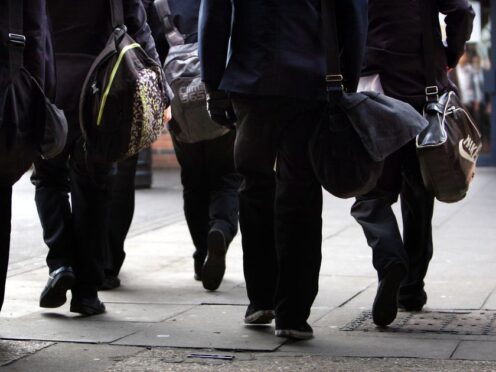
The air quality around planned new schools in England is “alarmingly poor”, a study has found.
Nearly nine in 10 new school sites exceeded World Health Organisation (WHO) targets on major air pollutants, according to researchers.
The analysis, in the journal Archives of Disease in Childhood, suggests children are more susceptible to the “harmful effects” of air pollution.
The study, led by researchers at Evelina London Children’s Hospital and King’s College London (KCL), has called for air quality assessment to be mandatory at the proposal and planning stage of any new school building, and for national guidance and legislation to be updated.
The WHO Global Air Quality Guidelines (AQG) set out numerical targets for annual exposure to major pollutants, including small particulate matter (PM2.5, PM10) and nitrogen dioxide (NO2).
Researchers identified 187 new schools to be built between 2017 and 2025 in England and locations for 147 of these schools were acquired.
They assessed the air quality at the 147 sites against the WHO air quality targets for PM2.5, PM10 and NO2, as well as against pollution levels across the UK.
The analysis found that 86% (126 out of 147) of the sites for new schools exceeded all three of the WHO targets studied, and every school location exceeded at least one.
Average readings of PM2.5 across all school sites were more than double those recommended by the WHO, the study found.
Pollutant levels were particularly high at sites in London, Birmingham, Manchester and Leeds, while those in other large cities, including Liverpool, Bristol, and Newcastle, were relatively low.
Pollutant levels were lowest at sites in the counties of Devon and Cornwall, according to the analysis
The researchers acknowledged that they used annual averages to estimate air pollution levels at new school sites, and that more granular data, incorporating different times of day and seasonality, would provide a more detailed picture.
But they concluded that the air quality around new schools approved and proposed to open in England is “alarmingly poor”.
The study’s authors warned: “The public health implications of avoidable childhood exposure to poor air quality could have significant effects on both the quality adjusted life years of the population and financial health expenditure in the United Kingdom.
“Children deserve protection from avoidable harm while at school.”
Researchers have called on the Department for Education (DfE) to update the guidance on new school proposals to ensure an air quality assessment is mandatory at the proposal stage.
Planning regulations should be updated to ensure that air quality is included in the public consultation stage and that building and site designs “minimise the impact of air pollution on children”, they added.
They said: “Unless current recommendations are replaced with mandatory standards, it is unlikely that those proposing or designing new schools will make these assessments unless there is an individual already involved in the process who is both well-informed and passionate about reducing the impact of pollution.”
A Government spokesperson said: “Local outdoor air quality is the responsibility of local authorities, who must take it into consideration when assessing all planning applications, including for new schools.
“We have set out the action we are taking to continue improving air quality in our Environmental Improvement Plan 2023, including allocating over £883 million to support local authorities in reducing levels of NO2 emissions from road transport.”

Enjoy the convenience of having The Sunday Post delivered as a digital ePaper straight to your smartphone, tablet or computer.
Subscribe for only £5.49 a month and enjoy all the benefits of the printed paper as a digital replica.
Subscribe